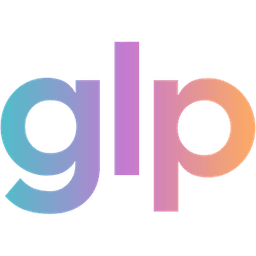When Your Insurance Plan Is Changing — and You’re Relying on a GLP-1
Author
glp winnerDate Published
- Twitter
- Facebook
- LinkedIn
- Instagram
- Copy Link

If you’re using a GLP-1 medication (for type 2 diabetes, weight management, or related conditions), this open-enrollment season deserves your attention. Premiums are rising, coverage rules are tightening, and some insurers are walking back support for GLP-1 drugs altogether. The goal isn’t to panic — it’s to prepare.
Marketplace plans are expected to raise premiums by roughly 18% on average for 2026 (Health System Tracker). At the same time, GLP-1 coverage remains a patchwork: the Kaiser Family Foundation found that only about 1% of marketplace plans currently cover Wegovy® for weight management. Most cover GLP-1s only when prescribed for diabetes.
The takeaway: these shifts matter, but you can navigate them with the right information and timing.
First, Some Plain-Language Insurance Basics
Insurance jargon can make anyone’s head spin, so here’s what matters in simple English:
- Formulary: Your plan’s official drug list — if it’s not there, coverage is unlikely.
- Prior Authorization: A requirement for your doctor to prove a drug is medically necessary before your insurer pays.
- Step Therapy: You must try cheaper drugs first and “step up” only if they don’t work.
- Brand Exclusion: When a plan says “we’ll cover some GLP-1s, but not this brand.”
- Marketplace/Exchange: Healthcare.gov or your state’s insurance site for buying individual coverage.
- Medicare/Medicaid: Public programs — Medicare mainly for 65+, Medicaid for lower-income households, rules vary by state.
What’s Actually Changing in 2026
Across nearly every insurance segment, GLP-1 coverage is under review.
Marketplace plans
Weight-loss indications are the first to go. Only 1 percent of ACA plans cover them now, while diabetes-related use remains widely accepted. Expect tighter prior authorization rules and stricter dose limits next year.
Medicaid and state plans
Coverage varies by state. Only about 13 states currently cover GLP-1s for obesity treatment (KFF Medicaid Brief). North Carolina recently ended this coverage for its state-employee plan due to costs — other states may follow.
Employer and commercial plans
Some employers are trimming benefits or restricting eligibility — for instance, limiting use to BMI ≥ 40 or requiring multiple failed weight-loss attempts before approval.
Medicare
By law, Medicare can’t cover drugs used solely for weight loss. But after the FDA approved Wegovy® for cardiovascular risk reduction in March 2024, certain Part D plans may cover it for that specific indication. If you don’t have qualifying heart disease, expect denial.
How to Shop Smart During Open Enrollment
When you log on to Healthcare.gov or your state marketplace, make these your non-negotiables:
- Search for your exact drug. Enter the brand name in the plan’s formulary tool. If it’s missing, coverage is unlikely.
- Check the tier and cost. See whether it’s “preferred specialty” or “non-preferred,” and what the coinsurance or co-pay is. High-deductible plans can make an expensive drug even costlier.
- Look for prior auth or step therapy flags. These add paperwork and delays.
- Confirm the indication. Many plans cover GLP-1s for diabetes but not weight management — that difference matters.
- Estimate your yearly cost. Add premiums + deductible + coinsurance. A slightly higher premium plan may still save you money.
- Ask about continuity of care. If you’re already taking a GLP-1, ask if you’ll be “grandfathered” in if coverage changes.
- Browse Healthcare.gov (or your state marketplace) to compare plan options, then check your specific GLP-1 coverage using the manufacturer’s online tools. For example: Wegovy, Zepbound, or Mounjaro all let you verify insurance coverage and estimate your real-world cost.
Staying Covered if You Lose It
If your insurer drops your GLP-1 coverage:
- Ask your doctor for a medical-necessity letter. Detailed clinical documentation often helps overturn a denial.
- Use manufacturer programs. Novo Nordisk and Eli Lilly both now offer direct-pay options (eligibility varies).
- Re-evaluate your eligibility. Some Medicaid expansions or state subsidies may provide better coverage.
- Budget ahead. Factor higher drug costs into your 2026 plan.
Final Thought
Insurance rules may shift, but you can still stay one step ahead. This isn’t about panic; it’s about planning. Check your coverage, double-check your drug list, and enter 2026 knowing exactly where you stand.
If you enjoy posts like these, you can subscribe to receive newsletter updates.
FAQ
Q: Do any marketplace plans cover GLP-1 drugs for weight loss?
A: Very few — only around 1 percent nationwide, per KFF. Check your plan’s formulary for Wegovy®, Zepbound™, or Saxenda®. If it’s not listed, assume no coverage.
Q: Why are premiums rising so much in 2026?
A: Insurers cite overall medical inflation, expensive new drugs (GLP-1s included), and the end of some federal subsidies. Health System Tracker pegs the median increase near 18 percent.
Q: How do I know if a plan requires step therapy for my GLP-1?
A: Look in the plan’s drug list or “utilization management” section. If you see “ST” or “Step Therapy,” you’ll need to try another medication first or get a waiver from your doctor.
Q: Can my plan drop GLP-1 coverage mid-year?
A: It can change the formulary at renewal or mid-year with notice. Ask if your plan has a “continuity of care” policy for current users.
Q: What’s the difference between brand exclusion and non-preferred status?
A: “Brand exclusion” means zero coverage. “Non-preferred” means it’s covered but costs more out of pocket.
Q: Does Medicare cover Wegovy yet?
A: Only for people with both obesity/overweight and established cardiovascular disease, under the March 2024 FDA label. For weight loss alone, Medicare still can’t pay.
Q: Can Medicaid cover GLP-1s?
A: Some states do. As of mid-2024 about 13 states cover at least one GLP-1 for obesity; check your state’s Medicaid drug list for updates.
Q: What if I can’t afford my GLP-1 without insurance?
A: Ask your doctor about alternatives within your plan’s coverage. Explore manufacturer self-pay options or prescription-assistance programs. Never buy from unverified online sources or “grey market” vendors.
Q: Is there a way to appeal a coverage denial?
A: Yes. Submit an appeal with your doctor’s letter of medical necessity and supporting records (labs, BMI, comorbidities). If denied again, you can request an independent review through your state insurance department.
Q: Are GLP-1 drugs considered essential health benefits under the ACA?
A: No. Weight-management drugs aren’t classified as essential benefits, so insurers aren’t required to cover them under federal law.
Q: Where can I compare total costs before enrolling?
A: Start with Healthcare.gov or your state marketplace, then check drug-cost tools on the manufacturer sites (Eli Lilly and Novo Nordisk) for estimated cash prices.
Sources
Keep Reading

Learn how FDA-approved GLP-1 medications like Wegovy, Ozempic, Mounjaro, and Zepbound work—and what to know about compounded and next-gen options.
.jpg&w=3840&q=100)
Step-by-step guide to compare GLP-1 telehealth & compounding providers—reviews, licensing, pharmacy accreditation—with GLP Winner support.
.jpg&w=3840&q=100)
Not all peptides are GLP-1s. Learn the difference between FDA-approved GLP-1s, pharmacy-compounded, grey market, and wellness peptides.
